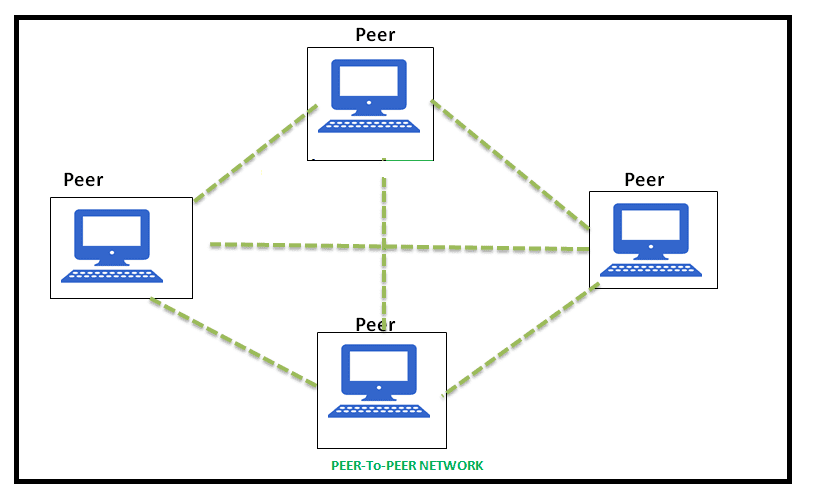In 2024, peer-to-peer (P2P) networks power everything from file sharing to global cryptocurrencies. In fact, over 60% of global internet traffic stems from P2P applications like BitTorrent and blockchain networks. It’s not just tech enthusiasts using these systems—businesses, governments, and everyday users rely on P2P models for speed, efficiency, and resilience.
So, what makes peer-to-peer networking so unique? One defining characteristic sets it apart: decentralization. There’s no central authority. No middleman. Instead, devices (or “peers”) connect directly to each other, sharing resources without relying on a central server. This means faster data transfers, better redundancy, and a network that’s tough to take down.
Understanding this decentralized structure isn’t just tech trivia—it’s critical if you work in IT, cybersecurity, or even business operations. Why? Because P2P models influence how data is shared, how systems stay resilient under pressure, and how emerging technologies are reshaping entire industries.
In this article, we’ll dive into the core features of P2P networking, why decentralization matters, and how it could impact the future of your work.
Let’s get started.
What is Peer-to-Peer (P2P) Networking?
At its core, peer-to-peer networking is a system where devices connect and communicate directly without relying on a centralized server. Each device, or “peer,” acts as both a client and a server, sharing and receiving resources equally.
Unlike the traditional client-server model, where a central server handles requests, P2P networks distribute the workload across all connected devices. This decentralized structure offers significant advantages in speed, cost-efficiency, and network resilience.
Key Characteristics of P2P Networks
- Decentralization: No single point of failure, reducing the risk of system-wide outages.
- Resource Sharing: Peers share computing power, storage, or data directly with one another.
- Scalability: Networks grow dynamically as new peers join, enhancing capacity without centralized infrastructure.
- Autonomy: Peers operate independently, reducing reliance on central authorities.
Types of Peer-to-Peer Networks
P2P networks aren’t one-size-fits-all. There are different models, each suited to specific needs. Let’s explore the main types:
1. Pure P2P Networks
In a pure P2P network, all devices are equal. There is no central authority or server. Each peer has the same privileges and responsibilities for sharing resources.
Example: File-sharing platforms like BitTorrent use pure P2P models, allowing users to download and upload files simultaneously.
2. Hybrid P2P Networks
Hybrid models blend P2P with client-server architecture. A central server manages peer discovery, but data exchange happens directly between peers.
Example: Messaging applications like Skype originally used a hybrid P2P system for better performance.
3. Structured vs. Unstructured P2P
- Structured P2P: Organizes peers using a predefined system like Distributed Hash Tables (DHT) for efficient resource location.
- Unstructured P2P: Peers connect randomly, making resource discovery less efficient but easier to set up.
How P2P Networks Work
Understanding the mechanics behind P2P networks clarifies their power. Here’s a simplified breakdown of the process:
- Peer Discovery: New devices connect by locating and joining existing peers.
- Resource Sharing: Each peer can request and provide data, files, or computing power.
- Data Distribution: Information is shared in small chunks, allowing faster, simultaneous transfers.
- Redundancy: Data is duplicated across peers, ensuring resilience against failures.
Advantages of Peer-to-Peer Networking
P2P networks aren’t just a technical curiosity—they offer real-world benefits across industries.
- Cost Efficiency: No need for expensive centralized servers.
- Speed: Direct peer connections reduce latency.
- Resilience: Decentralization protects against large-scale outages.
- Privacy: Data remains distributed, reducing reliance on third-party intermediaries.
Real-World Applications of P2P Networks
P2P networking drives innovations across industries. Let’s look at key use cases:
1. File Sharing
From music to software distribution, P2P enables efficient large-scale file transfers.
Example: BitTorrent, one of the largest file-sharing protocols, relies entirely on P2P networks.
2. Cryptocurrencies
Blockchain technology—the foundation of cryptocurrencies like Bitcoin—is built on P2P principles.
Impact: Peer-to-peer transactions eliminate intermediaries, reducing fees and increasing transparency.
3. Decentralized Finance (DeFi)
DeFi platforms use P2P models for direct financial transactions without banks or brokers.
Example: Protocols like Uniswap allow users to trade assets peer-to-peer on the blockchain.
4. Collaborative Computing
Distributed computing projects harness P2P power for massive computational tasks.
Example: SETI@home used global volunteers’ computers to analyze radio signals for extraterrestrial life.
Challenges and Limitations of P2P Networks
Despite their strengths, P2P systems face several challenges:
- Security Risks: Decentralized systems can be vulnerable to malicious peers and data tampering.
- Scalability Concerns: Managing large-scale P2P networks efficiently requires robust algorithms.
- Bandwidth Usage: High data-sharing volumes may strain user connections.
- Legal Issues: P2P networks are often associated with copyright infringement concerns.
The Future of Peer-to-Peer Networking
P2P technology is evolving rapidly. Emerging trends suggest even broader adoption and innovation:
- Web3 and Decentralized Internet: P2P principles underpin the next-generation internet, empowering users to control their data.
- Edge Computing: Decentralized processing closer to users enhances speed and reduces cloud dependency.
- Secure P2P Protocols: Advances in encryption and authentication are improving P2P security.
Key Takeaways
- Decentralization is the defining characteristic of P2P networks, enabling direct peer-to-peer resource sharing.
- Real-World Applications span file sharing, cryptocurrencies, DeFi, and collaborative computing.
- Advantages include cost savings, speed, and resilience, though challenges like security and scalability remain.
Understanding P2P networks is more than technical knowledge—it’s a glimpse into the future of digital communication and decentralized innovation. As technology evolves, P2P models will continue shaping how we share, interact, and build the digital world.






